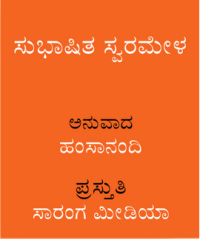Today is 9/30/2014, the seventh day of Navaratri. In yesterday’s post, I wrote about a composition of a 20th century composer. Today also, I am thinking of sharing a composition from another 20th century musician.
It’s often said that the ragas are infinite – “ananta”. Practically speaking, there are only a few hundred ragas that are in currency at any point in time. But due to many reasons, some well known ragas go out from circulation and some ragas considered rare become very famous at some other point of time. This cycle has repeated in the past millennium, and I guess the trend will continue to the next as well.
Right from the 14th century there were attempts at classifying ragas into different groups, based on the notes used in those melodies. This is very similar to how elements (and their compounds) are organized in the Periodic table. This method helps to understand similarities, differences etc, There were many such systems of classification, the last of which came in around 1650 AD. In this classification, Venkatamakhi not only did classify the ragas that existed at his time, but also built a framework for classifying such ragas that were yet to be invented at that time. This framework is known as the 72 mELa scheme. A mELa is a collection of notes, and does not become a raga by itself; but it is possible to create a raga by building around these notes.
This scheme paved the way for later day composers to experiment with notes and come up with newer melodies. For example, Muttuswamy Dikshita composed in all the 72 mELa rAgas postulated as possible by Venkatamakhi. Tyagaraja composed in most of these 72, and he also came up with some more with some permutation and combination of notes used, by dropping notes. This method was a bit different from earlier times, when a raga was defined by the form and phrases used rather than just from the notes and the order of the notes that occur in.
In general, when a raga is solely defined by the notes it uses and skips and the order of those notes, it offers less scope for elaboration. However, over time, such ragas also can develop their own character, and thereby become more expansive and can fire the imagination of more composers to come up with compositions. We can see examples this happening to many of the new ragas that were brought to life by Tyagaraja.
Ranjani is one of the ragas that were “created” by Tyagaraja. He composed only one composition in this raga. This raga is quite popular today, and many later day composers have also contributed to it’s popularity. One such composer is GNB.
G N Balasubramaniyan, better known as GNB was a star in the musical world of the 20th century. He was also a star on the silver screen, at a time when actors had to be good singers as well, and acted in several movies in the early 1940s. He has composed about 50 compositions and “Ranjani Niranjani”, praising the Goddess Parvati is one of his very popular compositions.
Now listen to this kriti played by Mandolin U Srinivas:
The composition ends at around time 28:00, but you you can’t stop there, you are not to blame! One can go on listening to the Mandolin magic no end!
Happy listening!
-neelanana




ನಿಮ್ಮ ಟಿಪ್ಪಣಿ ಬರೆಯಿರಿ
Comments feed for this article